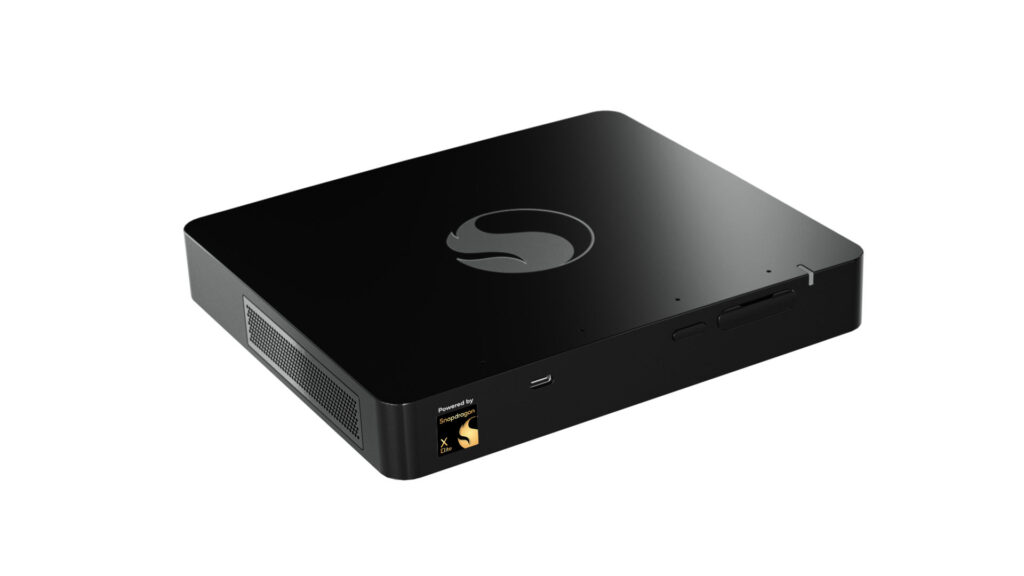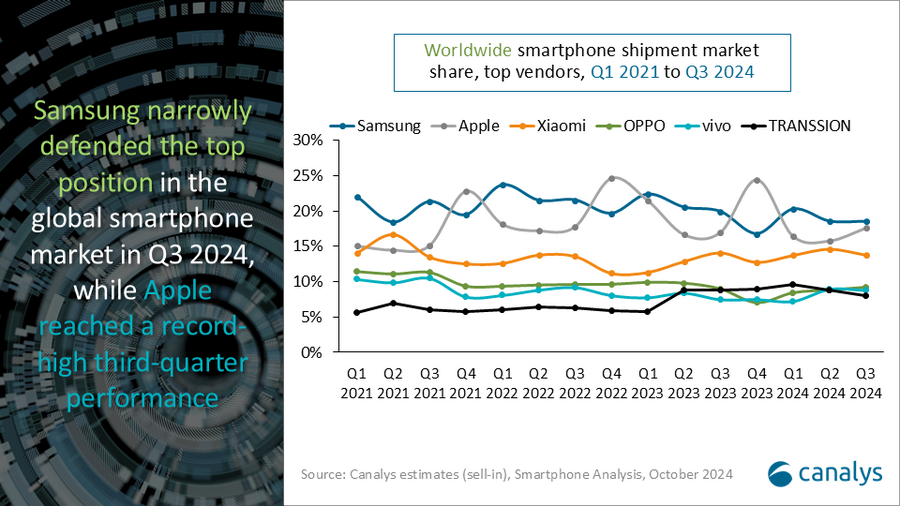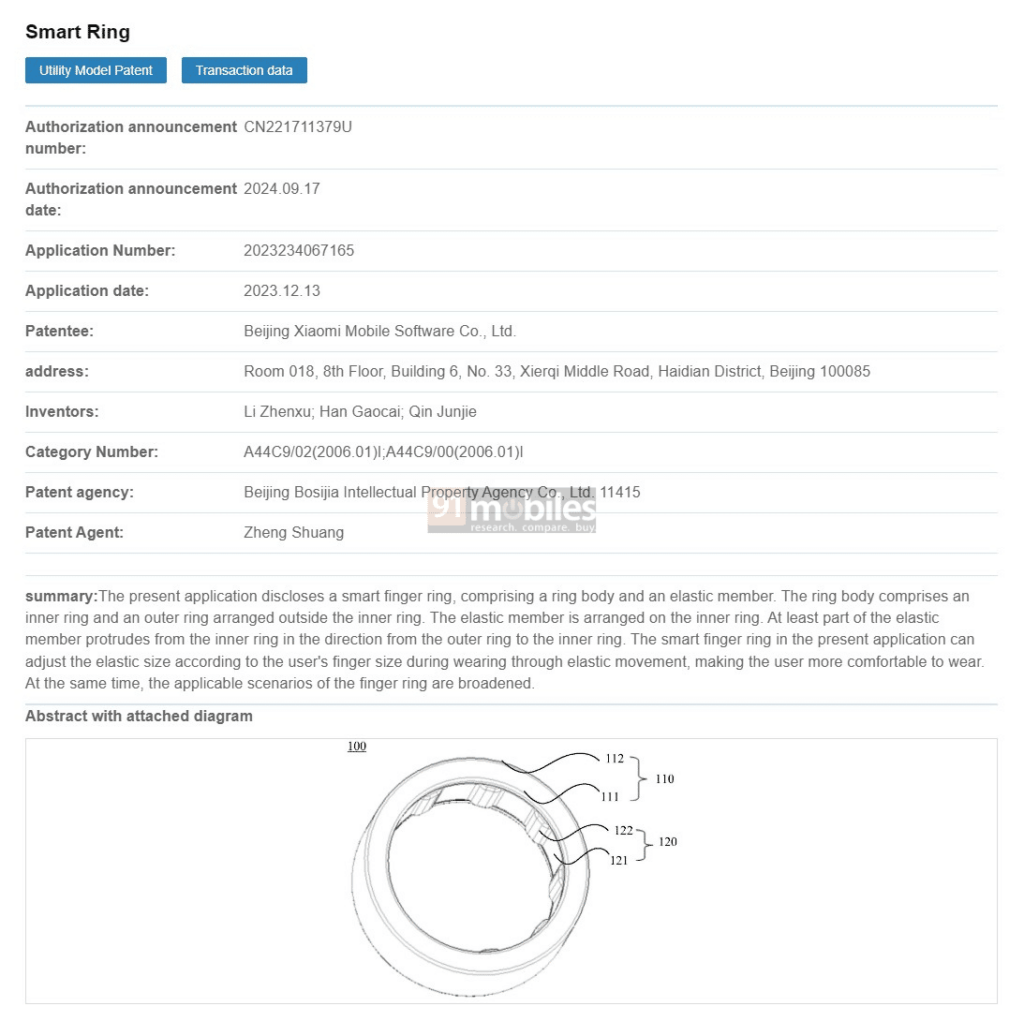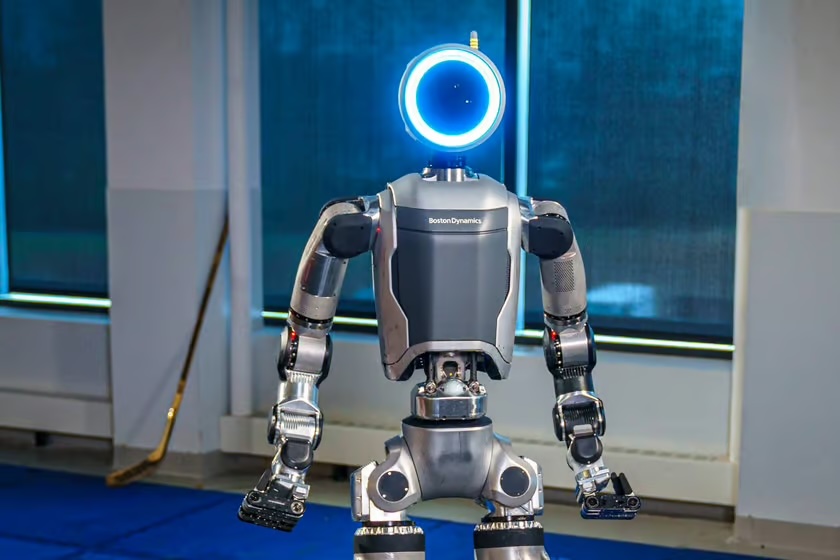
10-19 #DamnCold : TSMC is planning more plants in Europe; Apple is setting out to conquer the smart home with an aggressive new strategy; Li Auto has become the first Chinese new energy vehicle startup to produce 1M cars; etc.

Intel is allegedly looking to sell at least a minority stake in its Altera unit in a transaction that would raise several billion dollars in cash. Intel is seeking a deal that values Altera at around USD17B. Intel purchased Altera for USD16.7B in 2015. Intel has previously said it could look to monetize Altera business through an IPO, possibly as soon as 2026. But the idea of taking strategic or private equity investment would be a marked acceleration of those plans. (Neowin, CNBC)

Qualcomm has decided to cancel its Snapdragon Dev Kit, which is an USD899 mini PC powered by Windows 11 and the company’s latest Snapdragon X Elite processor. Qualcomm decided to abruptly discontinue the product, refund all orders (including for those with units on hand), and cease its support, claiming the device “has not met our usual standards of excellence”. Qualcomm has promised more devices soon. (Neowin, XDA-Developers, Ars Technica)

Qualcomm is allegedly weighing the complex geopolitical factors involved in a potential acquisition of Intel and is likely to wait until after the US presidential election in Nov 2024 before making any decisions. A key driver is getting more clarity on antitrust policy under the new presidential administration, as such a mega-merger between two chipmakers would be under intense regulatory scrutiny. (Bloomberg, Neowin)
Taiwan Semiconductor Manufacturing Co (TSMC) is planning more plants in Europe with a focus on the market for artificial intelligence chips. TSMC launched the construction of the new factory in Dresden in Aug 2024 in the presence of the European Commission president Ursula von der Leyen and the German Chancellor Olaf Scholz. The new semiconductor fabrication plant is the first in the EU. Total investments are expected to exceed EUR10B, however, the project was granted EUR5B in subsidies. It will be carried out in partnership with Bosch, Infineon and NXP “to meet the semiconductor needs of the rapidly growing European automotive and industrial sectors”.(Neowin, Bloomberg, SCMP)

Samsung Electronics has allegedly postponed taking deliveries of ASML chipmaking equipment for its upcoming factory in Texas as it has yet to win any major customers for the project. Samsung has been also holding off on placing orders to some other suppliers for the USD17B factory in Taylor city, prompting them to look for other customers and send staff deployed on site back home. The delay in equipment deliveries is a fresh setback to the Taylor project, which is at the heart of Samsung chairman Jay Y. Lee’s ambition to expand beyond its bread-and-butter memory chips into contract chip manufacturing, which Taiwan’s TSMC dominates. (CN Beta, Reuters, Techzine)

Samsung Electronics is estimated to log KRW9.1T (USD6.8B) in operating profit for 3Q24, falling short of the already-lowered KRW10.4T market consensus. Samsung Electronics plans to drastically cut its chip executive jobs and restructure semiconductor-related operations as it struggles to compete with rivals such as SK Hynix and Micron Technology in the advanced memory segment amid the AI boom. The changes are expected to involve a reduction in the number of executives within the DS division, as well as the replacement of several president-level technology officials overseeing the memory and foundry businesses. To achieve this, the company is conducting a thorough review of its business divisions to streamline underperforming areas, enhance its competitiveness in memory chips, and improve communication between research and manufacturing teams.(CN Beta, Korea Times, Display Daily, Digitimes, KED Global)


Samsung has announced it has developed the industry’s first 24-gigabit (Gb) GDDR7 DRAM. The 24Gb GDDR7 utilizes 5th-generation 10nm-class DRAM, which enables cell density to increase by 50% while maintaining the same package size as the predecessor. In addition to the advanced process node, three-level Pulse-Amplitude Modulation (PAM3) signalling is used to help achieve the industry-leading speed for graphics DRAM of 40 gigabits-per-second (Gbps), a 25% improvement over the previous version. The GDDR7’s performance can be further enhanced to up to 42.5Gbps, depending on the usage environment. (GSM Arena, Samsung)

Rambus has unveiled industry-first, complete memory interface chipsets for Gen5 DDR5 RDIMMs and next-generation DDR5 Multiplexed Rank Dual Inline Memory Modules (MRDIMMs). The Gen5 Registering Clock Driver (RCD), enabling RDIMMs operating at 8000 megatransfers per second (MT/s). The Multiplexed Registering Clock Driver (MRCD) and Multiplexed Data Buffer (MDB), enabling upcoming MRDIMMs running at speeds up to 12,800 MT/s by doubling the bandwidth of the DIMM beyond the native DRAM device speed. The second-generation server Power Management IC (PMIC5030) designed for both DDR5 RDIMM 8000 and MRDIMM 12800, providing ultra-high current at low voltage to support higher speeds and more DRAM and logic chips per module.(CN Beta, Business Wire, Yahoo, IT Home)


HID, a worldwide leader in trusted identity solutions, announces a new integration with Microsoft Entra ID to enable employees to use their existing physical access cards as a multi-factor authentication (MFA) method to access resources such as Entra ID and Microsoft 365. This enables organizations to take the next step on their journey to passwordless by simplifying MFA deployment and enabling faster end-user adoption for Entra ID users. (Neowin, HID Global, Sen.news)

Google will be making it harder for anyone to access Android device in an unauthorized manner by leveraging biometrics as an extra protection layer. The Google Identity Check option that is in development will require a fingerprint scan in addition to a PIN number or a password. Besides the upcoming Identity Check, Google has more privacy and security protection features in tow, such as the much touted Theft Detection Lock that is arriving to Android phones and prevents people from stealing the smartphone. (Android Authority, Phone Arena, Droid-Life)


General Motors (GM) will stop branding its batteries under the Ultium name. GM debuted the Ultium brand in Mar 2020 as part of a EV plan that was supposed to see 22 new electric models on sale in the US by 2023. The company formed a USD2.3B joint venture with LG Chem, called Ultium Cells LLC, and decided on a family of common batteries across its brands, using a nickel manganese cobalt aluminum chemistry in a pouch cell format that could be combined in modules for packs as small as 50kWh or larger than 200kWh, as found in the Hummer and Silverado EVs. GM reduced its battery costs by USD60 per kilowatt hour on average from 2023 to 2024 and is expecting another USD30 reduction in 2025 and will reduce it even lower with LFP. GM will continue to work with partner LG on batteries as well as Samsung SDI to build a new USD3.5B EV battery plant in Indiana. (Engadget, Ars Technica, The Verge)

Apple allegedly worked with a Chinese automaker for years to design a battery system for its now-cancelled car project. Apple was collaborating with BYD, a Shenzhen-based car company, to develop batteries using lithium iron phosphate (LFP) cells. Apple contributed engineering expertise, specifically in areas like heat management and advanced battery packs, while BYD supplied its manufacturing resources and proprietary LFP technologies. The battery was intended to be safer than most EV batteries at the time. (TechCrunch, Bloomberg)

GM Ventures has announced a USD10M investment in Forge Nano, a materials science company specializing in atomic layer deposition. General Motors and Forge Nano have also entered a strategic partnership agreement to collaborate on potential atomic layer deposition applications for GM batteries. Atomic layer deposition is a surface engineering technique that applies thin-film coatings to battery materials to control chemistry and structure at atomic scale. Using its Atomic Armor technology, Forge Nano will develop thin-film coatings for GM to pursue battery performance enhancements and cost reductions. Forge Nano will also build prototype lithium-ion battery cells at its Thornton, Colorado headquarters to showcase the capabilities of its technology.(TechCrunch, Electrive, General Motors)

ProLogium Technology, the global leader in LCB-based next-generation battery innovation, has showcased its 100% silicon composite anode battery. This cutting-edge battery technology, certified by TÜV Rheinland, is also adopted in partnership with Germany’s FEV Group to develop a next-generation battery pack, showcasing ProLogium’s substantial progress in LCB commercialization and introducing an exciting new concept to the market. The new battery system not only surpasses traditional lithium-ion batteries in energy density and charging efficiency but also addresses critical industry challenges. Its fast-charging capabilities help overcome the shortage of charging stations and improve the residual value of used vehicles. (CN Beta, ProLogium, The EV Report)


Samsung has confirmed that it is exploring new form factors for AI-powered devices that would offer users a more optimized combination of large screens and portability. The company is reportedly working on a new AI experience that would let user use smartphone without ever interacting with the Settings menu. The company plans to implement an AI feature on its devices “that can predict what consumers want in advance by improving the performance of ‘touch points’ such as keyboard and camera”. (Android Authority, ET News)

According to Canalys, the Indian smartphone market grew 9% in 3Q24, shipping 47.1M units. Vendors cleared inventory through early monsoon sales across online and offline channels to gear up for the festive season. However, early festive demand was sluggish, impacted by rising food inflation and slow urban spending on consumer durables. vivo claimed the pole position for the first time amid an aggressive push across channels, capturing a 19% market share and shipping 9.1M units. Xiaomi secured the second spot, shipping 7.8M units, driven by its budget 5G lineup, while Samsung came in third with 7.5M units. OPPO (excluding OnePlus) and realme completed the top five with 6.3M and 5.3M units shipped, respectively. (GSM Arena, Canalys)


According to Canalys, global smartphone shipments grew 5% YoY in 3Q24, marking a fourth consecutive quarter of growth. The current growth is primarily driven by resilient demand in emerging economies alongside the early stages of a replacement cycle in North America, China and Europe. Samsung shipped 18% of smartphones in Q3, narrowly defending its pole position against Apple, whose iPhones made up 18% of shipments. Xiaomi took 14% market share and maintained its position as the third largest smartphone vendor. OPPO reclaimed the fourth spot on the ranking table for the first time this year with 9% market share, supported by strong growth in India and Latin America. Completing the top five, vivo grew its shipments by double digits to make up 9% of the market. (GSM Arena, Canalys)


The official Poco website (po.co) will shut down, including all sites under the po.co domain—this includes the global site (/global) as well as regional sites (like /uk and /fr). The brand will host its products and services on Xiaomi’s website instead.(Gizmo China, POCO)

Nokia has laid off close to 2,000 people or about a fifth of its employee base across Greater China and plans to cut another 350 jobs across Europe as part of efforts to lower costs. The company has confirmed the company had opened consultations relating to laying off 350 employees in Europe. As of Dec 2023, Nokia had 10,400 employees in Greater China and 37,400 employees in Europe. The company laid out plans 2023 to cut up to 14,000 jobs to reduce costs and save between EUR800M (USD86M) and EUR1.2B by 2026. (CN Beta, DCD, Reuters)

Xiaomi’s patent on China National Intellectual Property Administration (CNIPA) shows the schematics of the smart ring’s design and a loose description of its working. Xiaomi is using some kind of elastic component (PVC or rubbery material) and a spring mechanism on the inner side of the ring. Together, they let the ring adjust its size automatically. So regardless of user’s finger size, the Xiaomi smart ring should dynamically resize and securely fit. (Android Authority, 91Mobiles)


Apple is reportedly working on a more affordable version of its spatial computing headset in the form of a USD2,000 “Apple Vision” device that could debut as early as 2025, according to Bloomberg’s Mark Gurman. Apple reportedly expects this more affordable model to sell at least twice as many units as the Vision Pro. Apple will struggle to hit 500,000 Vision Pro sales in 2024, according to IDC. To achieve the lower price point, the Apple Vision would likely use a less powerful processor and cheaper materials than aluminium and glass. The device is also expected to omit certain inessential features, such as the EyeSight display that shows the user’s eyes on the outside of the headset. Apple could also use larger, lower resolution displays for the more affordable version of the Vision Pro headset. (MacRumors, Bloomberg)

Apple is working on smart glasses and AirPods with built-in cameras for a potential release in 2027, according to Bloomberg’s Mark Gurman. Apple’s Vision Products Group is now looking beyond the Vision Pro and considering launching smart glasses comparable to Meta’s Ray-Ban collaboration. The smart glasses and camera-equipped AirPods are intended to make use of the billions of dollars invested in the Vision Pro’s visual intelligence capabilities. This technology allows devices to analyse their surroundings and provide relevant information to users. (MacRumors, Bloomberg)

According to Bloomberg’s Mark Gurman, Apple is setting out to conquer the smart home with an aggressive new strategy: putting Apple screens and software throughout the house in a way that creates an end-to-end experience. He expects home hardware to be a top priority for Apple. The push will include developing a new homeOS operating system and smart display, as well as a higher-end robotic tabletop device. The company’s goal is to use its new Apple Intelligence platform to offer home automation on steroids, as well as precise control of applications, devices and media. The company’s new homeOS will be built on the underpinnings of tvOS — the Apple TV set-top box operating system. The company also recently revamped its Home app. Apple is releasing a new smart display — something people can use to play TV+ streaming content, do FaceTime calls, surf the web, and access apps like Calendar and Notes. It would be an affordable iPad-like screen, and consumers could place multiple units around the house, like they might with a HomePod mini. (CN Beta, Bloomberg)


Tesla has unveiled Cybercab, which is a robotaxi with two gull-wing doors and no steering wheel or pedals. The company CEO Elon Musk has indicated that Cybercab to be produced from 2026 – eventually in high volume – and priced under USD30,000. Cybercab made its debut in a gold-finished exterior that features a light bar seemingly housing matrix headlights, reminiscent of the Cybertruck. One of the most interesting features of the Cybercab is the wireless induction charging. Musk assures that the Cybercab utilizes the latest Tesla AI5 computer and relies solely on camera systems. He also reiterated his intention to activate unsupervised Full Self-Driving on current models next year in specific regions. (Gizmo China, Tesla, Reuters, TechCrunch)

Tesla has unveiled Robovan, which is a prototype that is roughly the size of a bus and is designed for transporting people and goods within high-density areas. The Robovan is capable of carrying up to 20 passengers or cargo. The Robovan also has a distinctive retro-futuristic aesthetic. It has a silver metallic body with black accents and is adorned with sleek strips of lighting. It has sliding doors that open to reveal the interior, which includes seating, standing space, and tinted windows— all without a steering wheel. (Gizmo China, Business Insider, The Verge)

Stellantis plans to shutter and sell its large vehicle proving grounds in Arizona at the end of 2024. The decision is the latest cost-cutting measure by the trans-Atlantic automaker under CEO Carlos Tavares. The Arizona Proving Grounds covers 4,000 acres between Phoenix and Las Vegas in Yucca, Arizona. It has been used for vehicle testing and development for the automaker since then-Chrysler purchased the property for USD35M from Ford Motor in 2007. Stellantis plans to use a proving grounds in Arizona owned by Toyota Motor beginning 2025. (CN Beta, CNBC)

Li Auto has become the first Chinese new energy vehicle startup to produce 1M cars, with the one-millionth vehicle rolling off the assembly line at its factory in Changzhou. It took Li Auto 58 months to see vehicle deliveries go from first to 1M-th vehicle. Li Auto’s L series sources around 60% of its components locally, and this is expected to reach 70% by 2026, further boosting the development of eastern Jiangsu province’s automotive industrial chain, said Li Xiang, chairman and chief executive officer of the Beijing-based carmaker. Li Auto currently sells mainly L-series EREVs, including the Li L6, Li L7, Li L8 and Li L9, all of which are SUVs (sport utility vehicle). On 1 Mar 2024, the company’s first battery electric vehicle (BEV), the Li Mega MPV (multi-purpose vehicle), was launched. The company saw its 700,000th vehicle delivery in Mar, its 800,000th in Jun and its 900,000th in Aug 2024.(CN Beta, IT Home, Yicai Global, CNEVpost)

Toyota Motor, Honda Motor and Nissan Motor have reached an agreement to collaborate on developing in-car software. The companies will consider standardizing the specifications for car computer functions, such as window operation and wiper movement. Suzuki Motor is also partnering with major chip manufacturers and communications enterprises to develop software for autonomous driving and map information by fiscal 2024. Japanese automakers are intensifying such collaborations to better compete with leading U.S. and Chinese manufacturers in the automotive technology sector. (CN Beta, Detroit News, Guam Post)


Klarna, the AI-powered global payments network and shopping assistant, is now available to users checking out on Apple Pay online and in apps with iPhone and iPad on iOS 18 and iPadOS 18 or later. Eligible Apple Pay users in the U.S. and UK will have access to Klarna’s flexible payment offerings, including pay later in 3 or 4 instalments with no interest or over longer periods with APRs starting at 0%. The global expansion will continue with Canada slated to launch in the coming months.(MacRumors, Klarna)

Venmo has announced a new, highly requested feature that allows users to schedule one-time or recurring payments or requests with friends and family on Venmo. Users can use the new feature to set up one-time or recurring payments monthly, weekly, or bi-weekly in advance. Venmo’s new feature makes it easier to manage one-time or recurring expenses by setting up automatic payments or payment requests to another Venmo user.(Engadget, Paypal)

According to Jennifer Bailey, Apple’s Vice President of Apple Pay and Apple Wallet, Apple “worked really hard on getting a great consumer experience”. Apple Wallet can be used to complete various types of purchases, as well as store virtual car keys, hotel room keys, and digital IDs in certain states. Apple is working on new use cases for its Wallet app, and Bailey sees vehicle rentals as an area where Apple Wallet could prove useful. Certain hotels already support digital keys through the Apple Wallet app, while more than 30 vehicle manufacturers support Apple Car Key. The latter includes the likes of BMW, Hyundai, and Kia, and it will likely be offered by even more companies in the near future. Apple also plans to expand support for digital IDs and driver’s licenses in the Apple Wallet app. Since the feature launched, only seven US states currently support digital IDs in Apple Wallet — Arizona, California, Colorado, Georgia, Hawaii, Maryland, and Ohio. (CN Beta, MacRumors, Apple Insider, The Points Guy)


Boston Dynamics and Toyota Research Institute (TRI) have revealed plans to bring AI-based robotic intelligence to the electric Atlas humanoid robot. The collaboration will leverage the work that TRI has done around large behaviour models (LBMs), which operate along similar lines as the more familiar large language models (LLMs) behind platforms like ChatGPT. (TechCrunch, Japan Times, New Atlas)
